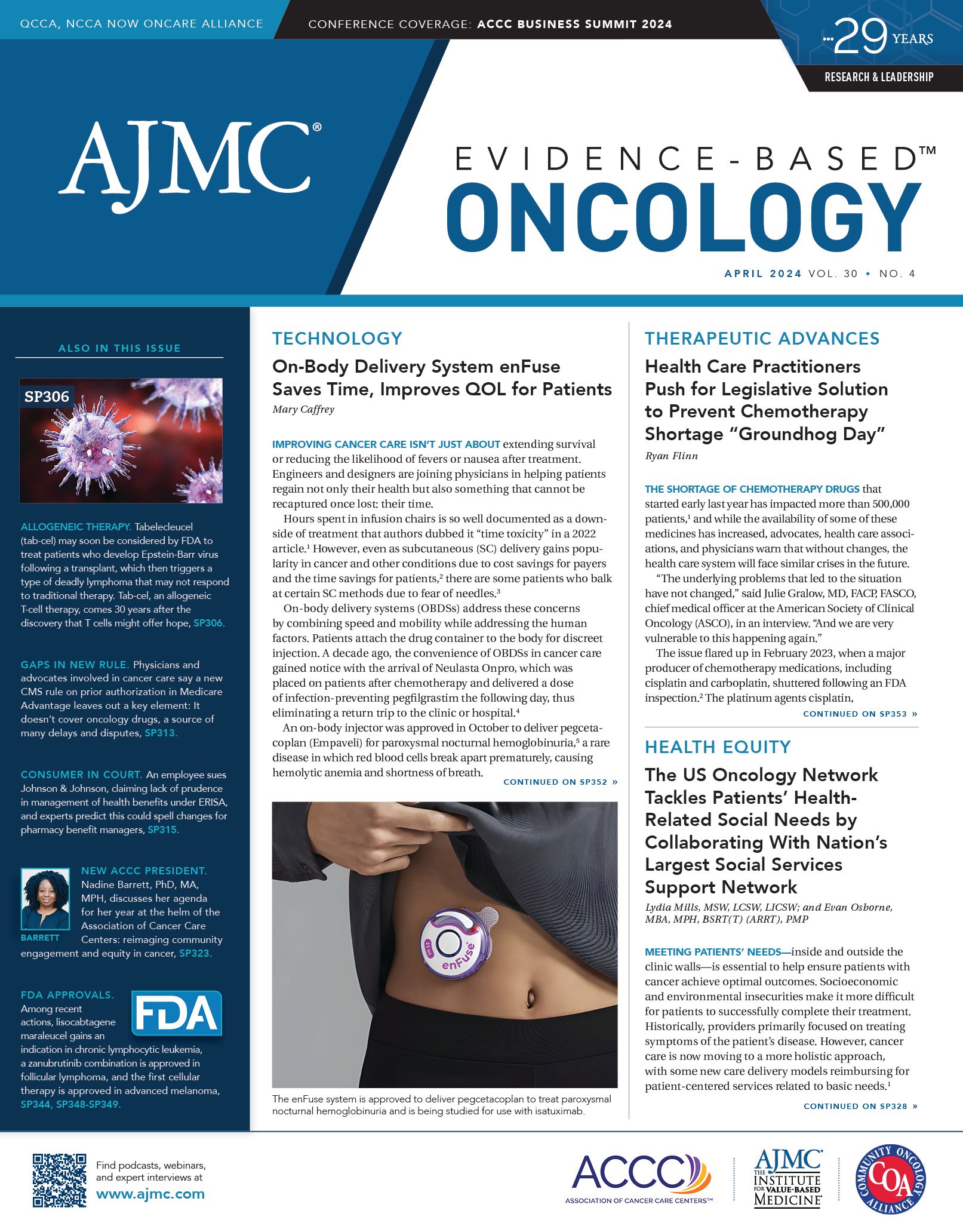- Center on Health Equity and Access
- Clinical
- Health Care Cost
- Health Care Delivery
- Insurance
- Policy
- Technology
- Value-Based Care
In the PBM Wars, It’s the Consumers’ Day in Court
If you ask health care experts why drug prices are so high, it won’t take long for someone to say, “pharmacy benefit managers,” or PBMs. Doctors, pharmacists, and drug makers have complained about PBMs’ dual role as price setters and gatekeepers of prescription drugs. Disputes have flared in the courts and in Congress, where efforts to attach PBM reform to the $1.2-trillion spending package fell short in March.1
Giant mergers that put payers and PBMs under 1 roof have caused complaints to soar, as incentives rose to steer business to specialty pharmacies that PBMs controlled.2,3 Critics also highlight rebates, which are payments pharmaceutical companies make to PBMs to ensure formulary placement. Health plan sponsors say the payments hold down overall costs for members, but pharmaceutical companies say they drive up sticker prices for drugs.4,5
Until now, PBM battles have occurred among different players within the health system. However, a complaint filed in US District Court in New Jersey has brought a new class of combatant to the table, and some say things won’t be the same for PBMs, no matter the outcome.
Antonio Ciaccia | Image credit: LinkedIn

In Lewandowski v Johnson and Johnson et al, the lead plaintiff is an employee who claims specific harms as an end user of her company’s health plan.6 Although previous litigation has involved reimbursement-related disputes with physicians or pharmacies against PBMs, this case appears to be the first brought by a consumer, according to an email sent to Evidence-Based Oncology™ from Fairmark Partners, LLP, a law firm based in Washington, DC. The firm filed the potential class action on February 5, 2024. US District Court Judge Zahid N. Quraishi will hear the case in Trenton, New Jersey.
In Lewandowski, plaintiff Ann Lewandowski bypasses the PBM—in this case, Express Scripts—and instead takes aim at her employer, which she said failed in its fiduciary duty under the Employee Retirement Income Security Act (ERISA). Johnson & Johnson (J&J), she asserts, failed to ensure the PBM managing benefits for the pharmaceutical giant’s 130,000 employees got the best deals on prescription drugs and improperly managed the self-funded ERISA plans’ assets, which are held in a trust.
The brief cites multiple examples in which the plans paid inflated prices for generic drugs, raising out-of-pocket costs for employees. J&J paid $1629 for a 90-pill supply of the HIV antiviral drug abacavir-lamivudine that costs pharmacies approximately $180, the suit states. Additionally, a 90-day supply of the multiple sclerosis drug teriflunomide can be purchased for $28 to $77 from online pharmacies, but J&J’s health plans paid $10,200, which the lawsuit noted was “not a typo.”6
At one point, Lewandowski found a less costly infusion center to administer a drug she needs regularly to treat multiple sclerosis. The switch would yield savings for J&J and reduce her own cost-sharing. But according to the brief, “the plan denied her request, going so far as to tell plaintiff that ‘saving money is not a reason to go out of network.’”6
High Rebates Hurt Consumers
It is long past time for the real victims of PBM abuses to have their day in court, say critics such as the Community Oncology Alliance, which updates a list of “PBM horror stories” on its website.7 PBM rebates fuel higher out-of-pocket costs for those whose insurance ties cost-sharing to a drug’s list price, including seniors on Medicare.
Typically, PBMs collect the highest rebates from the most expensive drugs; after taking their percentage, the PBMs then share the rest with the health plan, which spreads any savings across all members. Thus, relatively healthy plan members benefit from rebates, whereas heavy cost-sharing burdens fall to the handful of members who need expensive medications to stay alive—such as those with cancer or autoimmune conditions.8 What’s worse, some oncologists have complained that PBMs use prior authorization to block them from prescribing less-expensive therapies such as biosimilars because the PBM is contracted to get higher rebates for specific branded medications.9
“We have known for a long time now that there are a lot of different ways that PBMs can distort the underlying costs of medicines and exacerbate some of the very problems that they were originally hired to control,” said Antonio Ciaccia, CEO of 46brooklyn Research and president of 3 Axis Advisors.
Several years ago, while with the Ohio Pharmacists Association, Ciaccia worked to bring to light the practice of “spread pricing” in the Medicaid program, in which PBMs pocketed $245 million before audits revealed the scope of the problem.10 After a shift to a single PBM model, the spread pricing cost went from $6 per transaction to 20 cents per transaction. The idea that the same tactics used in the Medicaid plans were showing up in the private sector was not surprising, he said. The J&J lawsuit, Ciaccia said, breaks new ground in the degrees with which overcharging for specialty products and issues around spread pricing “are being weaponized.”
Ciaccia also pointed out that PBMs are not the only entities in the supply chain to “play games” with drug pricing. However, PBMs “were brought in to act as a necessary friction or pushback against one end of the drug supply chain who, left to their own devices, would love to charge as much as they could get away with,” he said.
Middleman or More?
According to CVS Health, which owns the PBM Caremark, the point of a PBM is to “manage prescription drug benefits for clients ranging from health insurers and Medicare Part D drug plans to large employers.”11 PBMs are often described as the “middleman” between pharmaceutical manufacturers and patients, negotiating the costs of drugs and providing home delivery services for patients across the nation.
David Schlett, MBA | Image credit: LinkedIn

“There’s probably 80-plus PBMs out there, and their key role is to administer the benefits on behalf of the downstream payers,” said David Schlett, MBA, executive vice president and president of PBM solutions at Prime Therapeutics LLC, which is owned by 19 Blue Cross Blue Shield companies or subsidiaries. “The reason why I mentioned the 80-plus
PBMs is because, based on their capabilities, they then have a variety of services and capabilities that they can provide beyond administration.”
PBMs “are the nucleus with which all pharmacy transactions revolve around and they, vertically speaking, can impact every layer of that transaction,” Ciaccia said. “PBMs act as the intermediary that works to determine which drugs will be covered on behalf of our health insurance plans, which pharmacies we can access our benefits through, and how much we will pay in cost-sharing for those medicines.”
Schlett noted that PBMs work with a variety of health plans or sponsors, including insurance companies, states, municipalities, union groups, Medicare, and Medicaid, among others. PBMs can also provide clinical services, which includes specialty dispensing pharmacies.
When PBMs negotiate prices for drugs, Schlett explained, they first assess the clinical appropriateness of the medication. “At the same time, we need to make sure there’s a breadth of access such that a member who has a certain disease or illness, they have access,” he said. “Once that access and clinical properties are established, the PBM negotiate[s] against or across retail pharmacies to earn discounts on retail brands, generic, and dispensing fees.”
Ciaccia described how today, PBMs are often not just stand-alone entities but an integrated part of a health system. “The largest PBMs, who make up over 80% market share, are part of large, vertically integrated companies that include health insurance lines of business, retail pharmacies, specialty pharmacies, mail-order pharmacies, wholesaling lines of business, relabelers and repackagers, and all sorts of other layers of the drug distribution channel,” he said. Thus, because CVS Caremark is a subsidiary of CVS Health, it can secure even greater discounts through this model.
However, PBMs are also known to give brand-name small molecule drugs and originator biologics more preference over generics and biosimilars due to PBMs having control of rebates and reimbursements with covered drugs.12,13 Schlett noted that the process to make medication accessible and affordable is different with each PBM, as some PBMs try to steer members and prescriptions to entities they control. For example, oncologists have increasingly complained about PBM tactics to force them to use a specialty pharmacy controlled by the PBM or its related insurer instead of using their in-house pharmacy, a strategy that JAMA found was associated with higher out-of-pocket costs for patients.14 Independent pharmacies, which are crucial for patient access in rural areas, are also struggling due to PBM strategies.15
This has led to some back and forth on the federal level on how much transparency and regulation is needed for PBMs, including the Federal Trade Commission’s rescinding of advocacy for PBMs due to PBMs using older advocacy materials from the Federal Trade Commission that opposed transparency in PBMs.12 With scrutiny of PBM’s role in health care increasing, calling more attention to their practices through a class action complaint could be a tipping point.
“When they fail or purposely engage in overcharges on medicines, understandably, the spotlight becomes a little brighter,” Ciaccia said. “Because again, they were supposed to be the ones making this better, not worse. When you look at the J&J lawsuit, it highlights a number of the perverse incentives and problems PBMs have, where their incentives are misaligned with that of their plan sponsors.”
Experts interviewed by Bloomberg Law agreed this case could be the first of many, and the fact that employees’ contributions were placed in a trust would be important, as they were now plan assets.16 As one expert noted, the fact that the employer is a global drug manufacturer would suggest the company should understand drug pricing better than most—and the case could turn on J&J’s “prudence” in plan management.
“Employers rely upon a PBM because they, most of the time, don’t have that expertise around pharmacy embedded,” said Schlett. “So, we’d like to believe that we’re the pharmacy experts, and we’re knowledge experts that help those payers alike achieve some of those objectives of cost management, affordability, and access for the members.”
A J&J spokesperson told Bloomberg that the case was “meritless,” and the company planned to move for dismissal,16 but there was no such filing at press time, according to Fairmark Partners.
Jonathan E. Levitt, JD | Image credit: Frier Levitt

In an opinion piece, attorneys Jonathan E. Levitt, JD, and Dae Y. Lee, PharmD, JD, called the J&J lawsuit “groundbreaking” and said large employers would need to change behavior to avoid similar litigation. “Regardless of its outcome, this class action will dramatically change pharmacy benefit management and the standard of care to which management will be held on benefit design,” they wrote.17
Ciaccia couldn’t predict whether other employers would face lawsuits. However, he said, PBMs are engaging in some practices on behalf of employers that could be considered at least problematic and possibly harmful to employees.
“What we’ve learned is that drug pricing has become an overly complex labyrinth that many are underequipped to navigate successfully,” he said. “I believe that for many small businesses, asking them to navigate the complexities of a PBM contract against a Fortune 500 company is asking them to win a chess game against Bobby Fischer. It’s just not going to happen.”
No Legislation for Now
Schlett said PBMs shouldn’t be viewed collectively, as there are individual PBMs that work differently than the bigger ones. “How do you view PBMs, not in aggregate but in isolation for how they enable the member to get affordable access and manage total costs,” he said. “How do you ensure there’s differentiation in that the PBMs are painted all similar? Yes, we have similar attributes, but we’re different in our mission and our goal.”
With PBM reform shelved for now, future legislation should employ more avenues in which to hold PBMs accountable while also acknowledging that there are resources and services that PBMs can provide for patients, he said. PBMs that work as they are intended can help to mitigate price gouging from drug manufacturers and distributors. But ways to hold PBMs accountable to avoid overpaying for drugs should be a future priority.
Ciaccia emphasized that employers often don’t know the right questions to ask when it comes to negotiating prices. “I think it’s fair to characterize PBMs as both arsonists and firefighters in the world of high drug prices,” he said. “They are providing a significant amount of savings off of prices that they are partially responsible for bloating in the first place.”
References
1. Cohrs R, Wilkerson J. Congress punts on PBM reform efforts. STAT. February 26, 2024. Accessed March 25, 2024. https://www.statnews.com/2024/02/26/congress-punts-on-pbm-reform-efforts/
2. Guardado JR. Policy research perspectives. American Medical Association. Accessed March 25, 2024. https://www.ama-assn.org/system/files/prp-pbm-shares-hhi.pdf
3. Fein AJ. Mapping the vertical integration of insurers, PBMs, specialty pharmacies, and providers: a May 2023 update. Drug Channels. May 10, 2023. Accessed March 25, 2024. https://www.drugchannels.net/2023/05/mapping-vertical-integration-of.html
4. How high prescription drug rebates can derail pharmacy benefit plans. HealthPartners. Accessed March 25, 2024. https://www.healthpartners.com/plan/blog/prescription-drug-rebates-and-pbms/
5. Prescription drug rebates. Pharmaceutical Care Management Association. Accessed March 24, 2024. https://www.pcmanet.org/prescription-drug-rebates/
6. Lewandowski v. Johnson & Johnson et al. US District Court of New Jersey. Case 1:24-cv-00671. Filed February 5, 2024.
7. The real-life patient impact of PBMs – volume VIII. Community Oncology Alliance. June 8, 2023. Accessed March 25, 2024. https://communityoncology.org/category/research-publications/pbm-horror-stories/
8. Flash finding: how drug money from sick people really works. 46Brooklyn Research. November 11, 2021. Accessed March 25, 2024. https://www.46brooklyn.com/news/111121-money-from-sick-people
9. Caffrey M. In today’s prior authorization system, “coverage is not access.” American Journal of Managed Care. March 4, 2022. Accessed March 25, 2024. https://www.ajmc.com/view/in-today-s-prior-authorization-system-coverage-is-not-access-
10. Ohio auditor releases stunning Medicaid PBM audit report. Ohio Pharmacists Association. August 16, 2018. Accessed March 25, 2024. https://www.ohiopharmacists.org/aws/OPA/pt/sd/news_article/184063/_PARENT/layout_interior_details/false
11. Pharmacy benefit manager. CVS Health. Accessed March 18, 2024. https://www.cvshealth.com/services/prescription-drug-coverage/pharmacy-benefits-management.html
12. Lagasse J. Senate Finance Committee targets PBM reform in new legislation. Healthcare Finance. November 9, 2023. Accessed March 18, 2024. https://www.healthcarefinancenews.com/news/senate-finance-committee-targets-pbm-reform-new-legislation
13. Jeremias S. Patient with MS sues J&J over ERISA violation. Center for Biosimilars. February 14, 2024. Accessed March 25, 2024. https://www.centerforbiosimilars.com/view/patient-with-ms-sues-j-j-over-erisa-violation
14. Shih YT, Xu Y, Yao JC. Financial outcomes of “bagging” oncology drugs among privately insured patients with cancer. JAMA Netw Open. 2023;6(9):e2332643. doi:10.1001/jamanetworkopen.2023.32643
15. Khemlani A. Amid increased federal scrutiny, PBMs pivot strategy to further squeeze independent pharmacies. Yahoo Finance. March 24, 2024. Accessed March 25, 2024. https://finance.yahoo.com/news/amid-increased-federal-scrutiny-pbms-pivot-strategy-to-further-squeeze-independent-pharmacies-150017649.html
16. Hansard S. Johnson & Johnson case signals employee drug price suits to come. Bloomberg Law. February 9, 2024. Accessed March 18, 2024. https://news.bloomberglaw.com/daily-labor-report/johnson-johnson-case-signals-employee-drug-price-suits-to-come
17. Levitt JE, Lee DY. Pharmacy benefit design: Johnson & Johnson lawsuit ushers in new ‘duty of prudence’ standard. ALM Benefits Pro. March 12, 2024. Accessed March 25, 2024. https://www.benefitspro.com/2024/03/12/pharmacy-benefit-design-johnson-johnson-lawsuit-ushers-in-new-duty-of-prudence-standard/?slreturn=20240325123855

CMS' 340B Repayment Proposal May Harm Vulnerable Hospitals, Reward Those With Higher Revenues
April 26th 2024The 340B hospitals not receiving an offsetting lump-sum payment from CMS following 2018-2022 cuts later ruled unlawful are disproportionately rural, publicly owned, and nonacademic, according to a new study.
Read More
Exploring Medicare Advantage Prior Authorization Variations
March 26th 2024On this episode of Managed Care Cast, we're talking with the authors of a study published in the March 2024 issue of The American Journal of Managed Care® about their findings on variations in prior authorization use across Medicare Advantage plans.
Listen
Oncology Onward: A Conversation With Dr Debra Patt of Texas Oncology
August 1st 2023Debra Patt, MD, PhD, MBA, joins hosts Emeline Aviki, MD, MBA, and Stephen Schleicher, MD, MBA, for episode 2 of our newest podcast, "Oncology Onward: Conversations With Innovators and Changemakers in Cancer Care."
Listen
Oncology Practices Keep Pace With PBMs, in Court and Beyond
April 5th 2024This panel at the Community Oncology Alliance conference discussed the impact of pharmacy benefit manager (PBM) response to the end of direct and indirect remuneration fees, which has been dramatic cuts to cancer drug reimbursement.
Read More
COA 2024: Back in Orlando With Reimbursement Challenges Topping the Agenda
April 1st 2024The annual Community Oncology Conference comes on the heels of a cyberattack that has caused significant disruption to providers, and many have sought relief from payers in areas such as prior authorization.
Read More
